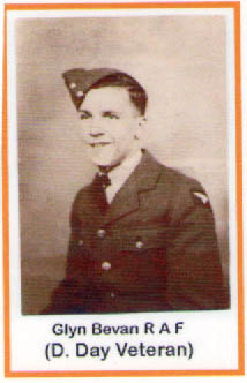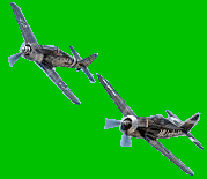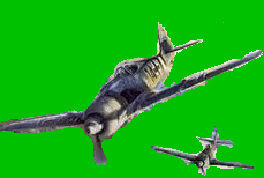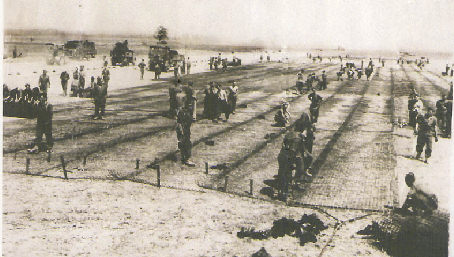Monthly Lectures
The Wednesday afternoon slot is popular with good attendances. April’s talk on the Newport Ship, and Newport’s future museum plans were of considerable interest to the audience. The next lecture is on ‘Conservation’ – an important aspect of Museum life and so we hope you’ll come along.
Diary Dates
Wednesday 4th April - ‘ The Newport Ship’ , 2pm at the Museum
Wednesday 4th – 21st April – Under 11sChildren’s Easter Egg Hunt, 50p, and coffee morning with an Easter theme
Wednesday 2nd May – ‘ Conservation’ – the Ralph Robinson Memorial Lecture by Phil Parkes
100 Club
No. 34 Jill Phipps £25
No. 78 Jennifer Tuck £10
No. 92 Margaret Phillips £5
Fundraising March – £431
The Easter Egg
Easter is traditionally when we think Spring has arrived. This is when things start to grow. When one thinks about it almost everything starts with an egg. Human and animal life as we know it – frog spawn, insects, fish, birds, bats etc. The list is endless.
So we have come to associate Easter and Spring with the start of life as an EGG.
In Russia the Czar gave his beloved Alexandria a Faberge egg every Easter. Chocolate eggs have become affordable to the ordinary family. They are traditionally made in two moulded halves, and then wrapped in fancy paper to imitate the Faberge egg. Alternatively, the plain chocolate egg is decorated with flowers and other motifs, and perhaps a name. Over the years we have altered this Easter tradition to suit modern days. We now have the Easter Bunny but the Easter Egg is still the favourite gift at Easter.
The Roving Reporter
Obituary
We were all saddened to hear of the death of Glyn Bevan. Don Bearcroft has written about Glyn on page 4 of this Newsletter. Our thoughts are with Glyn’s family and friends.
A Note on Early Petrol Pumps in Llanhilleth
Car ownership in the Llanhilleth area was quite low in the pre World War 11 period being confined to doctors and a few businessmen. Some delivery was being carried out by vans but the horse and cart was still a common means of goods transportation.
The advent of World War 11 with its petrol rationing for an even smaller number of essential users reduced car traffic to almost nil but public transport in the form of buses and trains continued though on a much reduced scale. Due to the petrol scarcity other forms of transport were re-examined including the steam driven ‘Sentinel’ heavy lorries which Webbs Brewery had retired some years earlier.
The oil companies like Shell and B.P. had installed pumps at locations to suit the pre war local and through traffic. There were two installations on the main route through the town, one near the Walpole Hotel (now the rugby club) which has now disappeared and another at High Street, the remains of which are visible. They consisted of one or two pumps located on land immediately behind the footway without any form of shelter and operated by a resident attendant.
In the instance of the Walpole pumps, the driver would stop his vehicle on the highway alongside the pumps and sound his horn. The landlord of the Hotel (Mr Bill Phillips) would emerge from the building to serve the driver with the petrol of his choice by trailing the hose across the footway and delivery was achieved by turning a crank handle at the rear of the pump. He would take the money, give change, replace the hose and point to the dial on the pump to show how much petrol had been served.
It was said that the petrol supply company had a formal agreement with the attendant and this probably applied at High Street also where a building once stood alongside the pumps to house the attendant. During the filling, pedestrians were expected either to wait until it was completed or walk around the stationary vehicle, an arrangement accepted without complaint.
The serving of petrol by this method continued until the post war Labour Government enacted the 1947 Town and Country Planning Act which aimed to control development nationwide. The Act was to be implemented by the appointment of a County Planning Officer and staff and the Monmouthshire appointment was Mr James Kegie. One of his earliest recommendations to the County Council was that:
- Miners’ Concessionary Coal should be delivered in bags and not dumped on the highway, which was common practice in South Wales.
- Petrol should not be served over the footway to vehicles on the highway.
The County Council agreed with both these recommendations and a time limit was approved for their implementation.
Around this time the Cardiff financier Sir Julian Hodge saw a business opportunity and together with the petrol supply companies provided finance for those wishing to construct approved filling stations off the highway. In this way Mr Bill Pritchard constructed his filling station on Commercial Road between Ty’r Graig and Aberbeeg so that vehicles would leave the main highway, select from a range of fuels and fill up within a covered area.
Laurence Hale, March 2012
More About Pumps
Reading last month’s Newsletter I too was most surprised that the pumps on High Street, Llanhilleth were in fact paraffin pumps. They have been there such a long time that paraffin was probably used a lot more than petrol, as there probably were not many cars around.
In Abertillery on the main road, Somerset Street, a few shops just south of where Hill Street joins Somerset Street was quite a large shop with a petrol pump in the door alcove. I do not remember this (I’m not THAT old) but I was secretary for many years at Collier’s garage, so I often heard all the old family stories. This shop was owned by the founder Mr. H.J. Collier and this pump in Somerset Street in the shop doorway was the first petrol pump in Abertillery. I assume the tank itself was under the road and was subsequently dug up or filled with sand for safety.
The Roving Reporter
Poetry Please
We had a glorious display of daffodils in the County in March so it seems appropriate to print an old favourite, written in 1804.
“Daffodils” by William Wordsworth
I wandered lonely as a cloud
That floats on high o’er vales and hills,
When all at once I saw a crowd,
A host of golden daffodils;
Beside the lake, beneath the trees,
Fluttering and dancing in the breeze.
Continuous as the stars that shine
And twinkle on the Milky Way
They stretched in never-ending line
Along the margin of a bay:
Ten thousand saw I at a glance,
Tossing their heads in sprightly dance.
The waves beside them danced; but they
Outdid the sparkling waves in glee:
A poet could not but be gay,
In such a jocund company:
I gazed – and gazed – but little thought
What wealth the show to me had brought:
For oft, when on my couch I lie
In vacant or in pensive mood,
They flash upon that inward eye
Which is the bliss of solitude;
And then my heart with pleasure fills,
And dances with the daffodils.
Book Corner
Titanic Valour by Inger Sheil price £8.99. This is a gripping biography of Welshman Harold Lowe who ran away to West Africa at the age of fifteen and enjoyed a long association with seafaring. He was described as ‘the real hero’ of the Titanic as he was the only officer to return to the ship to look for survivors.
The Story of Wales by Jon Gower price £20. This is the book accompanying the six part series of the same title which has recently featured on TV, presented by Huw Edwards. The book revisits the major turning points in Welsh history from fledgling state under Llewellyn the Last to the industrial revolution.
Wales – At Water’s Edge by Jon Gower price £19.99. Published to show the glory of the Welsh coast, coinciding with the opening of the Wales Coast Path.
Postage Stamps
A recent set of stamps featured notable Britons. Most were well known names but who was Joan Mary Fry? Read on.
Born in 1862, she came from a wealthy Quaker family and became known as a relief worker and social reformer. Despite the constraints of Victorian life and her strict upbringing, which meant that she did not travel unaccompanied or unchaperoned until she was thirty, and did not visit a theatre until she was sixty, she nonetheless emerged as a powerful social worker. A committed pacifist, she attended many military tribunals and courts martial to check that conscientious objectors were properly treated and was not afraid to intervene if she thought it necessary. In 1919 she visited Germany to report on the impact of the continued allied blockade on the health of the German population and set up a relief distribution network. In 1926 she sought to do what she could to relieve deprivation in Britain, including in the coalfields where she helped to start feeding centres for the children of unemployed miners. Perhaps her greatest contribution was her work for the Friends Allotment Committee which allowed unemployed miners throughout Britain to grow vegetables on unused land without losing any part of their dole. She turned down any honour for her efforts, refusing to feel she might profit from others’ misfortune. She died in 1955.
Joan Mary Fry visited the South Wales Coalfields in her work setting up feeding centres. Does anyone know if she visited Abertillery and District?
Easter Holiday – places to visit
Abertillery Museum – the Museum is holding an Easter Egg Hunt for the under-11s until 21st April and there is plenty to occupy older children and adults too, so please come along.
Big Pit Museum – exhibition until 15th June entitled ‘Brunel – Works in Wales’.
Bedwellty House, Tredegar – this former iron master’s house has been carefully restored and both it and the gardens are worth a visit. The landscaped gardens are a delight and you can also see the largest single piece of coal in Wales. Download a voucher for a 2 for 1 homemade lunchtime meal plus drink at the Orchid House Tearoom, until 30th April (the offer does not include Sundays).
Museum Matters
 Glyn Bevan
Glyn Bevan
Over the past two years Peggy and I lost family and friends, some have been expected others not, especially those who are young and should have had a life to look forward to.
Our Museum Society has lost hard working members who worked to make the museum what it is today.
Recently the death of Glyn Bevan has added to this list, I met Glyn and his wife Barbara when I attended Aberbeeg Methodist where both worshipped and were involved in the running their church. Some of the younger members referred to them as, Uncle Glyn and Aunty Babs. It was not long before they joined the Museum Society and worked as hard for it as they did for their church.
After the death of Barbara, Glyn although heartbroken continued to work in the museum, I offered him a particularly nice photograph that I had taken of Barbara. “No thanks he said I have all my memories in my mind, I have no need of photographs”.
 Glyn had served in the Royal Air Force during the war and after D-Day he was sent to France where he helped lay the advanced airfields. The work comprised of first levelling the ground and then laying steel mesh over it to make a firm landing ground for the air craft to land and take off from enabling them to spend more time in the air being refuelled from the pipeline code named Pluto which brought fuel from Shankling Chine on the Isle of Wight to France.
Glyn had served in the Royal Air Force during the war and after D-Day he was sent to France where he helped lay the advanced airfields. The work comprised of first levelling the ground and then laying steel mesh over it to make a firm landing ground for the air craft to land and take off from enabling them to spend more time in the air being refuelled from the pipeline code named Pluto which brought fuel from Shankling Chine on the Isle of Wight to France.
There is a photograph of this activity with Glyn in it and of Glyn in RAF uniform in our IIWW display.
On one occasion when I was setting out a toy exhibition Glyn was helping and when I set out the Airfix Aeroplanes he said. “That’s him, that’s the one”.
He was pointing at two Focke Wulf 190s he went on to tell me the story of Boxing Day 1940. 
I had read of this being the last throw of the Luftwaffe, the Germans with the shortage of petrol decided to make an all out effort to cripple the Allied aircraft on the ground. They chose Boxing Day thinking that most aircraft would be grounded as this was a Christmas holiday.
This is the story as Glyn related it to me.
We were out in the open laying the mesh and rolling the ground when we heard the sound of aircraft engines. At first we thought they were ours but the engine sound was different, we stood watching as the planes grew. Must be the Yanks someone said Grumman Intruders. Some said then as we watched we saw bright twinkling lights along the leading edge of their wings. Jerry’s! We shouted and dove for cover.
They were Focke Wulf 190s and came from the four points of the compass, strafing as they dived and then returning after they finished their run. They did this until they ran out of ammo . I asked if anyone was hurt? He said that there was a corrugated iron shed which we used as a toilet, after the planes left a man staggered out of the door with a line of blood down his front. They took him away in an ambulance.
I persuaded Glyn to tell the schoolchildren this when they came on a school visit and the subject was the IIWW. The children watched him in awe as he told his story
 Glyn continued on into Holland where he was billeted with Dutch people who he would go continue to visit after the war. Glyn went to France for the 50 th D-Day celebrations. Glyn donated his flag that was on his table and the sand from the invasion beaches which was presented to him in a jar.
Glyn continued on into Holland where he was billeted with Dutch people who he would go continue to visit after the war. Glyn went to France for the 50 th D-Day celebrations. Glyn donated his flag that was on his table and the sand from the invasion beaches which was presented to him in a jar.

 Glyn had had a good life and as a Christian I know he will be reunited with his beloved Bab’s nevertheless he will be greatly missed by all those who knew him!
Glyn had had a good life and as a Christian I know he will be reunited with his beloved Bab’s nevertheless he will be greatly missed by all those who knew him!
In the museum Glyn had appointed himself to empty the waste baskets and Lord Help anyone if they did it! They will still be emptied as I know he will be watching to see that we do it properly.
Don Bearcroft Curator
